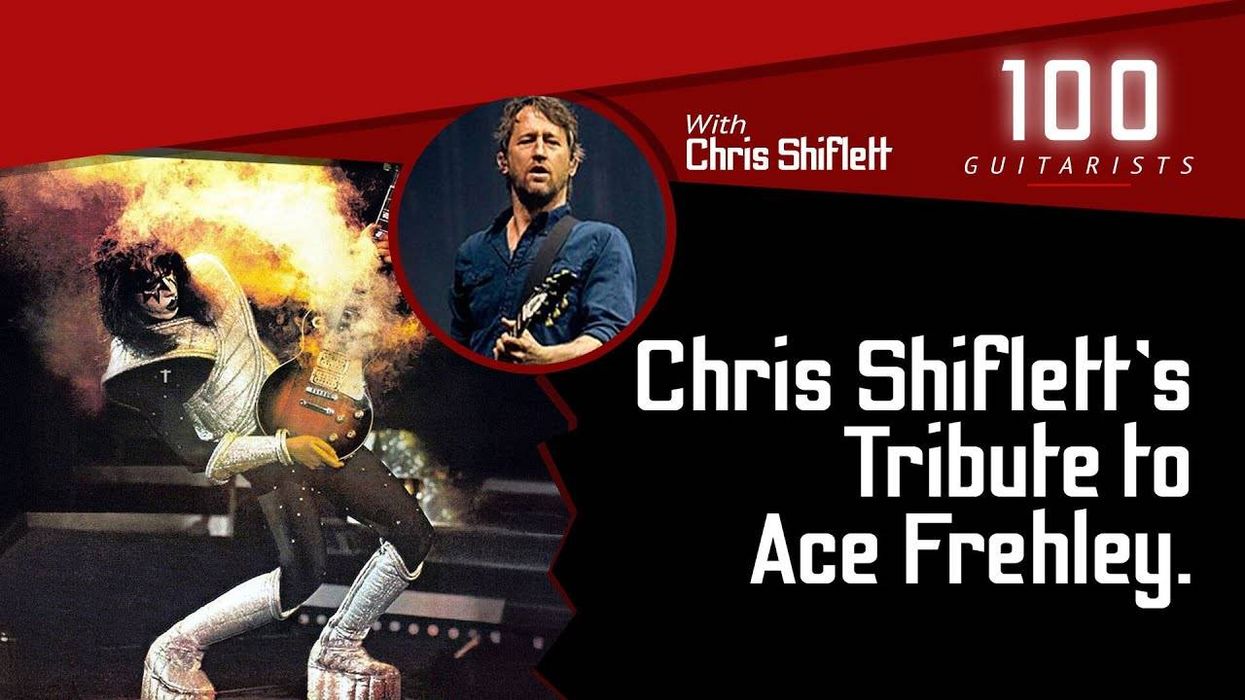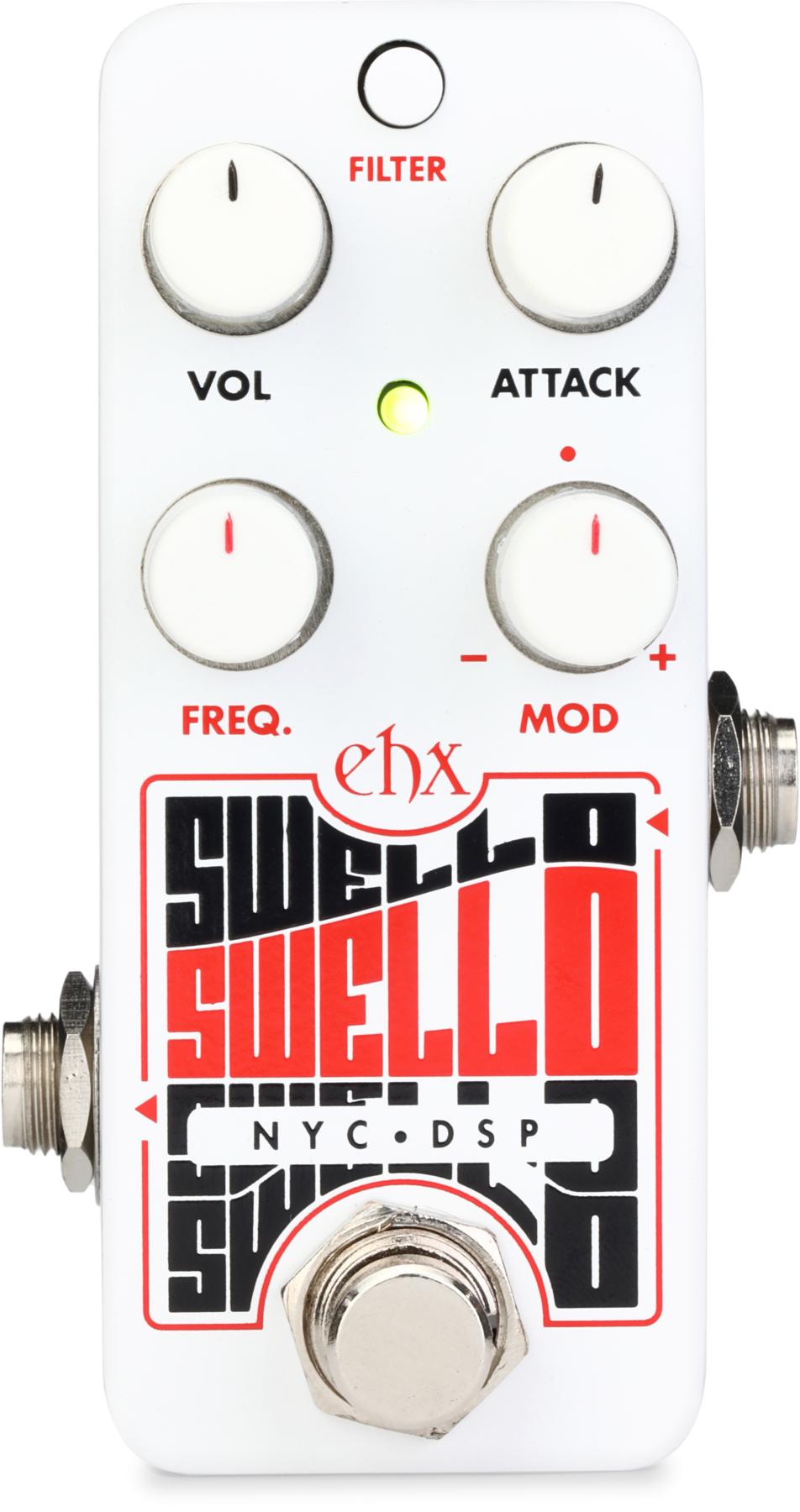
The new Orange Tiny Terror ventures into the review chamber this month. From the company that is synonymous with British voiced tube tone comes a new class “A” all-tube mini amp. Packing a lot of punch in a small pouch, the Tiny Terror is the latest brainchild of Orange Senior Designer, Adrian Emsley. The company claims that it has been able to squeeze every drop of that signature Orange tone into the Tiny Terror, providing guitarists with an affordable alternative to the company’s higherpriced models. Sounds like a great idea to me, so lets grab a six pack and start terrorizing, Orange style.
No Bigger Than A Lunchbox
They say it’s not the size of the dog in the fight, but rather the size of the fight in the dog. Obviously this was the theory behind the design of the Tiny Terror. Literally no bigger than a lunch box, the Tiny Terror measures just 6” high, 5” deep and 1 foot long, and weighs in at just over 12 lbs. It features a cool, retro-looking white metal chassis with vented top plate, and the traditional orange logo and insignia.
There are front panel controls for volume, mini tone knob and gain, two rocker-style toggle switches for on-off-stand by and switching the output from 7 to 15 watts, and one 1/4” input, that’s all! Rear panel features are much the same, providing three 1/4” outputs, two rated for 8 ohms and one 16 ohm output. There’s also an 115v VAC power input and a 250mA recessed fuse housing, but that’s it. The Tiny Terror was designed to simply connect a speaker cab, allow you to plug your guitar in and start throwin’ down. No complicated programming or confusing menus to scroll through. Guitar to amp to speaker; you get the idea.
Inventing Terror
The Tiny Terror utilizes class A valve technology with a 100% analog signal path that eliminates any and all digital clipping output characteristics. Driven by a pair of EL84 power valves and a front end that utilizes a duct of 12AX7 preamp valves. Switchable from 7 to 15 watts of output, Orange designers have designed the gain structure of the Tiny Terror to work in a very unique way; utilizing a dual gang gain pot, one side turns up the first gain stage to the point of very heavy compression, while the other side changes the impedance of the second gain stage so that it to compresses to the same degree.
It utilizes a five section fully filmed interleaved output transformer that is very closely balanced to primary. The EL84 output tubes are cathode biased to around 90% in the 15w position, and 96% in the 7w position. In short, the Tiny Terror is designed to produce as much gain as a four stage gain pot, but the output tubes are driven evenly all the way through. The tone control is also designed in a unique way, where the tone circuit is not on the preamp side, but actually part of the phase inverter (power amp) so the gain structure of the amp is unaffected by the tone control.
Raising the Terror Alert
For testing purposes, I utilized two different cabs: an older Marshall (1966B) 2x12 cab with stock 75w Celestions, as well as a Marshall (1960B) 4x12 cab, loaded with Celestion Vintage 30s. From the guitar garage, a Les Paul Limited recently acquired at the Arlington Guitar Show and a mid ‘90s photo flame Telecaster were put into service.
The setup was literally the extent of plugging in three chords: power, speaker input, and instrument input. Before you know it, you’re ready to rock. After all, the tried and true technique of “straight into the amp” is the source of the purest tone.
My first test was with the Telecaster. Using the 15w output setting, volume on seven, tone on eight and gain on three, the Telecaster sounded like a telecaster should after consuming a six pack of Red Bull. It was big, fat and ballsy, while still retaining an articulate high-end sparkle, supplying enough of the “twang thang” that we all love. I really appreciated clean tones that produce a fair amount of tube compression saturation. Though the tone is still clean and distinguishable, it’s got some nuts to it.
In experimenting with increasing the gain characteristics, the Tele really started to roar with the gain on six and reducing the main output to four. Don’t be fooled, fellow tone chasers, this is a loud 15 watts, and more than enough for most clubs. By engaging the 7 watt switch (lowering the plate on the power transformer), it was way cool to run the master on ten, tone on ten and gain on two. This provides a very nice power valve compression that is silky and smooth and breathes, all at a very comfortable output level that would be very desirable for recording.
 With a quick change over to the 4x12 Marshall cab, and the new love of my life, a Les Paul Limited with an insane flametop in Santa Fe Sunrise (I had to throw that in), I am ready to let the rubber hit the road. Try setting the gain on six and the tone and volume on ten in the 15w mode, and the Tiny Terror transforms into a giant beast. Angus Young lives in this tone. Don’t let the small size fool you; the Tiny Terror is capable of producing a huge overdriven tone with an incredible amount of gain. It was pleasantly surprising, as I did not expect this amount of gain.With sustain forever, the Les Paul sings in this mode.
With a quick change over to the 4x12 Marshall cab, and the new love of my life, a Les Paul Limited with an insane flametop in Santa Fe Sunrise (I had to throw that in), I am ready to let the rubber hit the road. Try setting the gain on six and the tone and volume on ten in the 15w mode, and the Tiny Terror transforms into a giant beast. Angus Young lives in this tone. Don’t let the small size fool you; the Tiny Terror is capable of producing a huge overdriven tone with an incredible amount of gain. It was pleasantly surprising, as I did not expect this amount of gain.With sustain forever, the Les Paul sings in this mode. The Tiny Terror still retains that trademarked vintage-voiced Orange tone, but adds enough gain to satisfy hard rockers. I really dig a tube amp when the tubes heat up to the point you can smell them. Oooh, oooh, that smell, the smell of tone surrounds you. You can tell the amp is biased a little hot, and that’s the smell of Tiny Terror.
The Final Mojo
Upside
The Tiny Terror is 100% indicative of what its name implies. It’s both tiny and a terror, class A style. Refreshingly simplistic and straight forward in finding a tone suitable for any style of playing, from highly compressed clean tones to an incredible vintage-voiced British overdrive, the Tiny Terror is a bad motor scooter. Great for recording and yes, more than enough for live gigs. Don’t let the size fool you, because in this case, size doesn’t matter. The Tiny Terror will kick your ass, but at a list price of $699 and a street price of $549, complete with custom form-fit padded case, the Tiny Terror will save your ears, your back and your wallet.
Downside
An effects loop would be a welcomed feature, but would understandably drive up the price.
Rating: Golden M

Orange USA
MSRP $699.00
2065 Peachtree Industrial Court
Suite 208
Atlanta, GA 30341
404-303-8196
www.orangeamps.com








![Rig Rundown: Russian Circles’ Mike Sullivan [2025]](https://www.premierguitar.com/media-library/youtube.jpg?id=62303631&width=1245&height=700&quality=70&coordinates=0%2C0%2C0%2C0)











